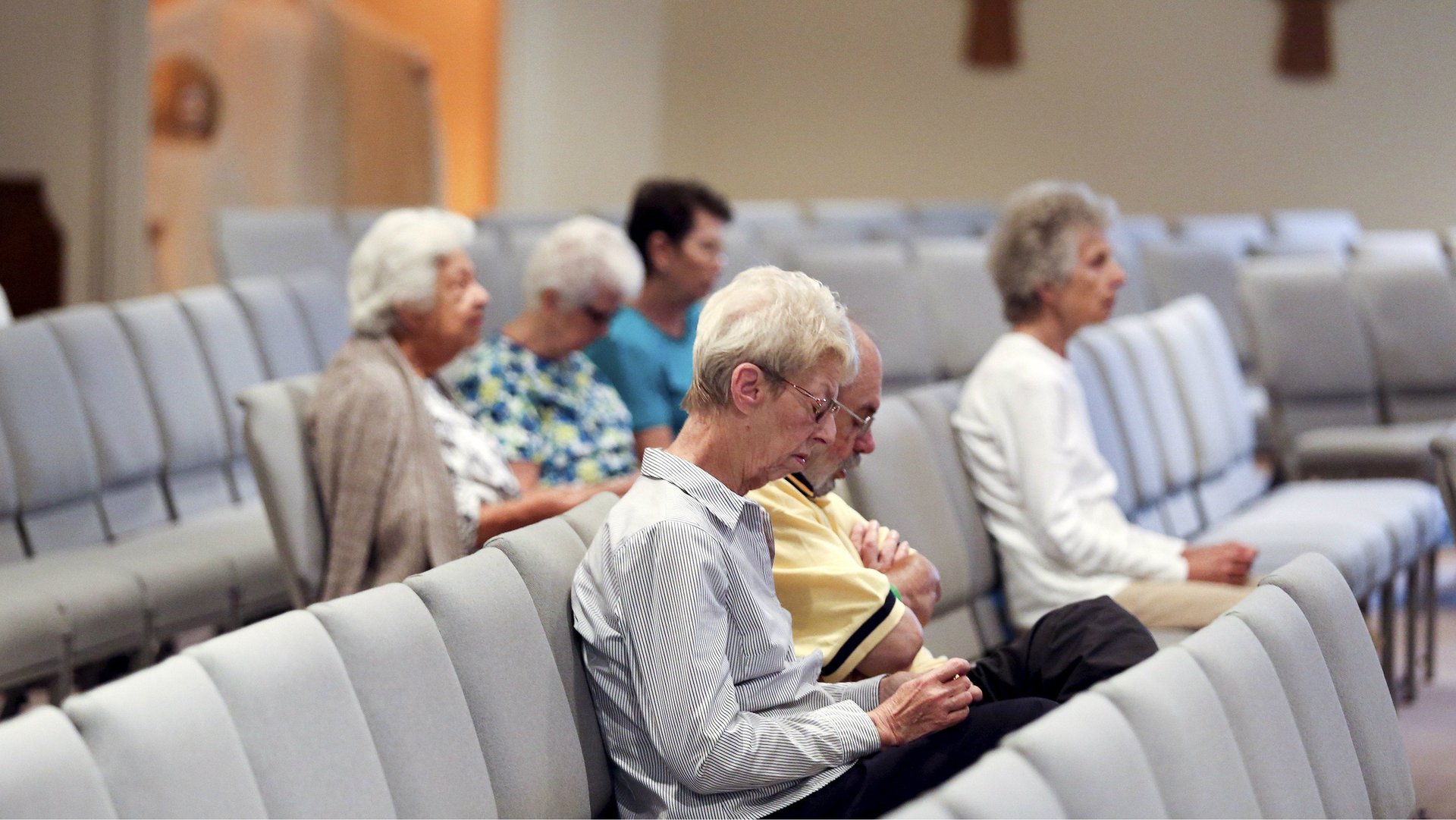White Christians are now a minority in America
Religion in white America is dying, while religion in non-white America is holding strong.


Religion in white America is dying, while religion in non-white America is holding strong.
A new, sweeping report from the Public Religion Research Institute (PRRI) that surveyed 101,000 people across all 50 states reveals that a falling percentage of Americans now identify as white and Christian. Whereas in 1976, 81% of Americans described themselves as white and part of a Christian denomination, in 2016, only 43% said the same.
What’s particularly noteworthy from the report is that religion is faring much better among non-white populations. In the US, the religions and denominations with the highest proportion of members aged 18 to 29 are Hinduism and Islam, whose members hail from communities generally not considered white. Meanwhile, white Catholics and Protestants have far fewer young people, which bodes poorly for these groups’ longevity.
Over the past 10 years, a sinking number of Americans have described themselves as white and members of a Christian denomination. Between 2006 and 2016, the number of people who identify as white evangelical Protestant, white mainline Protestant, and white Catholic have dropped by roughly 5 percentage points. The drop among evangelicals is particularly surprising. While that subset was once thought to be “exempt” from a mass abandonment of organized religion among white Americans, the effect merely happened later for white evangelical Protestants, according to PRRI CEO Robert P. Jones.
This decrease in “white Christian” identification has occurred in every state except Hawaii. States in the Northeast saw the most significant drops, but the decline has happened throughout the South and Midwest as well. Across the entire country, 39 states had white Christian majorities in 2007, but only 23 did by 2016, according to PRRI.
Meanwhile, more and more Americans are aligning themselves with no particular religion at all. In 1976, just 7% of the population described themselves as religiously “unaffiliated”; 30 years later, 24% of the population did.